Battery driven or power plug driven touchless faucets: Here’s what you need to know to choose the correct power supply for your next installation.
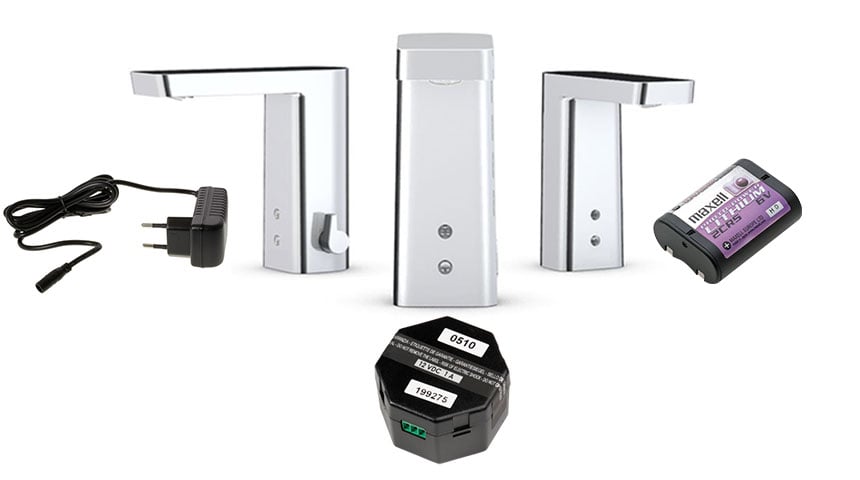
There are different power supply options available for touchless faucets: plug transformer (on the left), hub transformer (in the middle) and battery (on the right)
Automatically operated faucets, also known as touchless faucets, come with several benefits for your customers as they improve hygiene, reduce water and energy consumption and are easy to operate.
But with multiple options for powering your touchless faucet, it’s important to weigh up the pros and cons of each power solution based on the needs of your installation project.
Fixed power supply Vs. battery-driven faucets?
From installation to maintenance, here’s how to make the right choice between battery-driven faucets and faucets that are plugged into your customers’ electrical system.
- Used in private households and high-usage locations, such as airports, hospitals, or shopping centres.
- Removes the need of replacing the faucets’ battery on a regular basis.
As the power socket is installed under the sink, make sure to check there’s an outlet nearby, or otherwise, consult an electrician to supply an outlet for your installation.
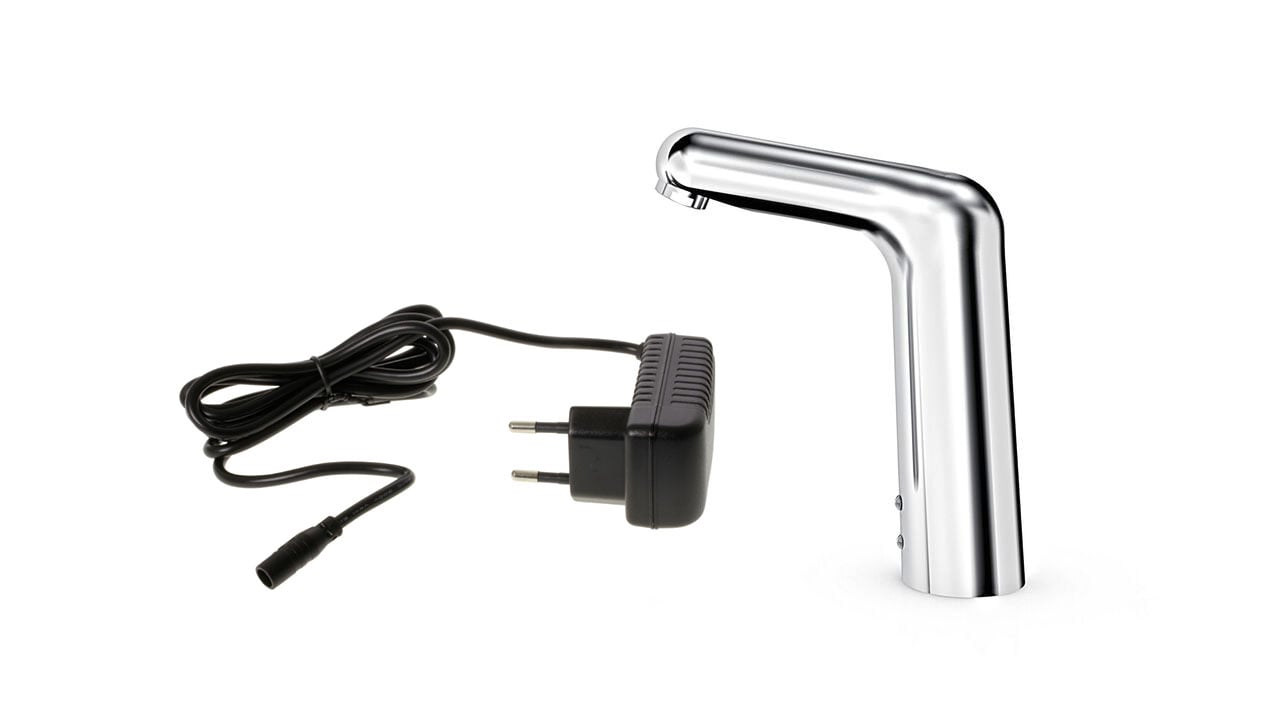
Fixed power supply via a power socket is a good option for households or locations with high usage volume, such as airports or shopping centres.
- Recommended power supply for concealed electronic faucets
- Used in rooms where multiple faucets are installed, such as in public and health care facilities with high traffic, but only one power supply/socket is available.
- Can be installed without a power socket under the sink.
- Conceals cables and installation equipment behind the wall and lowers the risk for vandalism or other related damages.
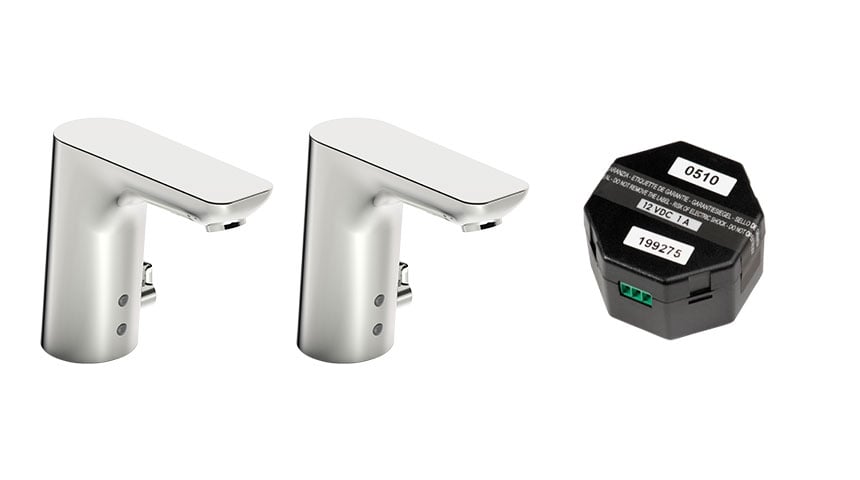
Fixed power supply via a hub transfer enables connecting multiple touchless faucets into one power socket outlet.
For larger family homes with high usage, a main supply or power transformer version can also be installed. If two to five faucets are installed, make sure you have enough power sources available or else, consult the manual to connect multiple faucets with one power socket.
Also, consider the reliability of your power supply. If the electrical service is unpredictable in the area where the touchless faucets are installed, you will not be able to use the faucets when the power is out.
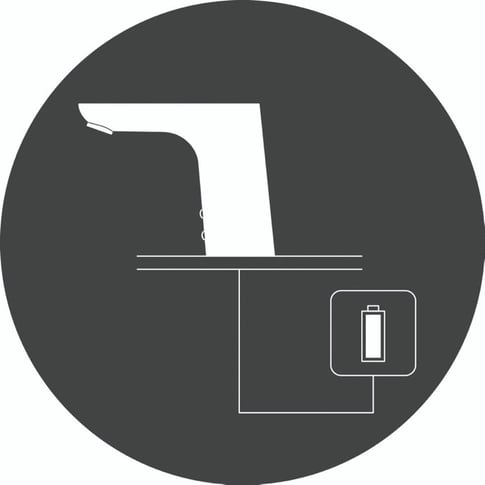
Battery-operated touchless faucet is a flexible option for different locations
- Mostly found in private households, public premises, and renovation projects.
- Powered by lithium batteries that fit in a small case under the sink and can last 3 to 5 years.
- No upfront costs required for additional wiring or a professional electrician as they can be installed without a fixed power supply.
How do I know about the battery status?
When the battery is low, the red LED light built into the motion sensor will blink red to indicate that it’s time to order a new battery. When the battery is very low, the battery alarm will sound to indicate that it’s time to replace the battery.
Depending on the frequency of use, the battery life can be up to five years.
Touchless faucets with Bluetooth connection can be connected to the Oras App From the app, it’s quick and easy to check the real-time battery life status.
How do I change the battery?
In most modern models, the battery can be exchanged by homeowners within a few minutes as it’s located in a small capsule under the washbasin and attached to the cable of the sensor.
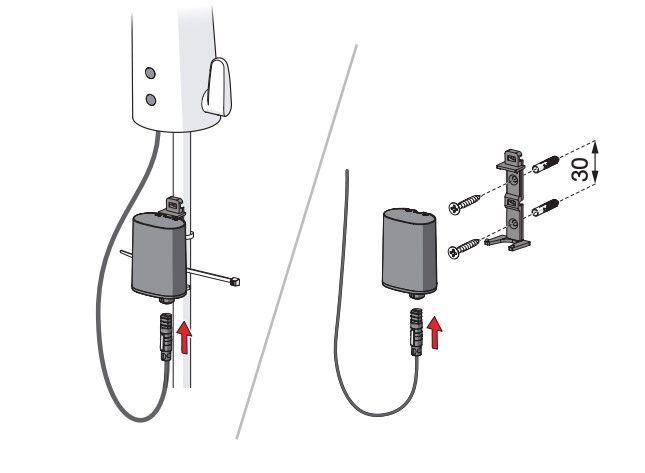
Changing the battery for a touchless faucet is quick and easy as in most faucets the battery is located in a battery case below the sink.
Some models require the removal of the faucet body as the battery case is inside the faucet. So pay attention to the placement of the battery of your faucet model to ensure an easy and convenient battery replacement for your customer.
For public spaces, consider going for a model where the battery case is hidden inside the faucet body to lower the risk of vandalism or unauthorized removal of batteries.
For more information on battery replacements, you can check out our instructional video on how to exchange the battery in one of our Oras Electra faucets.
What if I need to change the power supply after installation?
Changing the power supply after installation is easy and does not require you to buy a new touchless faucet. So even if you decide to go for a battery-driven solution, you can easily switch to a power plug driven faucet afterwards and vice versa on new faucets with Bluetooth Sensor.
Are there any special requirements for installation?
The idea of installing a touchless faucet may sound challenging, but whether it’s a washbasin faucet or a kitchen faucet – an automatic faucet can be installed even faster than a traditional single-lever mixer faucet.
Both battery and fixed power supply faucets use the same infrastructure and fixing parts as traditional faucets. That means, there’s no need for extra holes or extra considerations for special fixtures.
There is no one-size-fits-all solution to automatic faucets. Ultimately, the right power supply for your faucet depends on where you want to install it and how it will be used. Frequency of use, power supply options, and the surrounding dimensions are all important factors to consider before investing in a model.










